For the second leg of the Europa league quarter-finals, Villarreal made a short trip to the Mestalla to play against their Valencian neighbours. Under a torrential downpour and a win with at least three away goals required to progress, the challenge was steep for the Yellow Submarine.
Marcelino’s Valencia, having secured three vital away goals in the first leg, needed to defend his aggregate lead, or even better, extend it. In this tactical analysis, we examine how he used a clinical defend-and-counter tactic to overcome his former side Villarreal to reach the semi-finals.
Lineups

Valencia stuck with their 4-4-2 system that has proved successful in the Copa del Rey, Spanish League and the Europa League thus far. Striker Rodrigo Moreno was left out of the starting XI and instead Santi Mina was chosen to partner the speedster Kévin Gameiro upfront. Gonçalo Guedes played at right midfield to join the duo in counter attacks. Mouctar Diakhaby was paired with Facundo Roncaglia in central defence.
Javier Calleja made interesting choices to his Villarreal lineup. With his team fighting to stay out of relegation in La Liga, his priority was the weekend fixture against CD Leganés. He chose to play a 4-1-4-1 with his key players missing in the starting line-up. Samuel Chukwueze started on bench, while Karl Toko Ekambi and Santi Cazorla weren’t even included in the matchday squad.
How Valencia minimised transition phases
Transitions in football are what brings goals, tackles, cards and injuries. With the final quarter of the season loaded with crucial fixtures, Marcelino’s objective was to seal this game as economically as possible. The Mestalla was already battling unforgiving weather; hence, the aim was to minimise transitions.
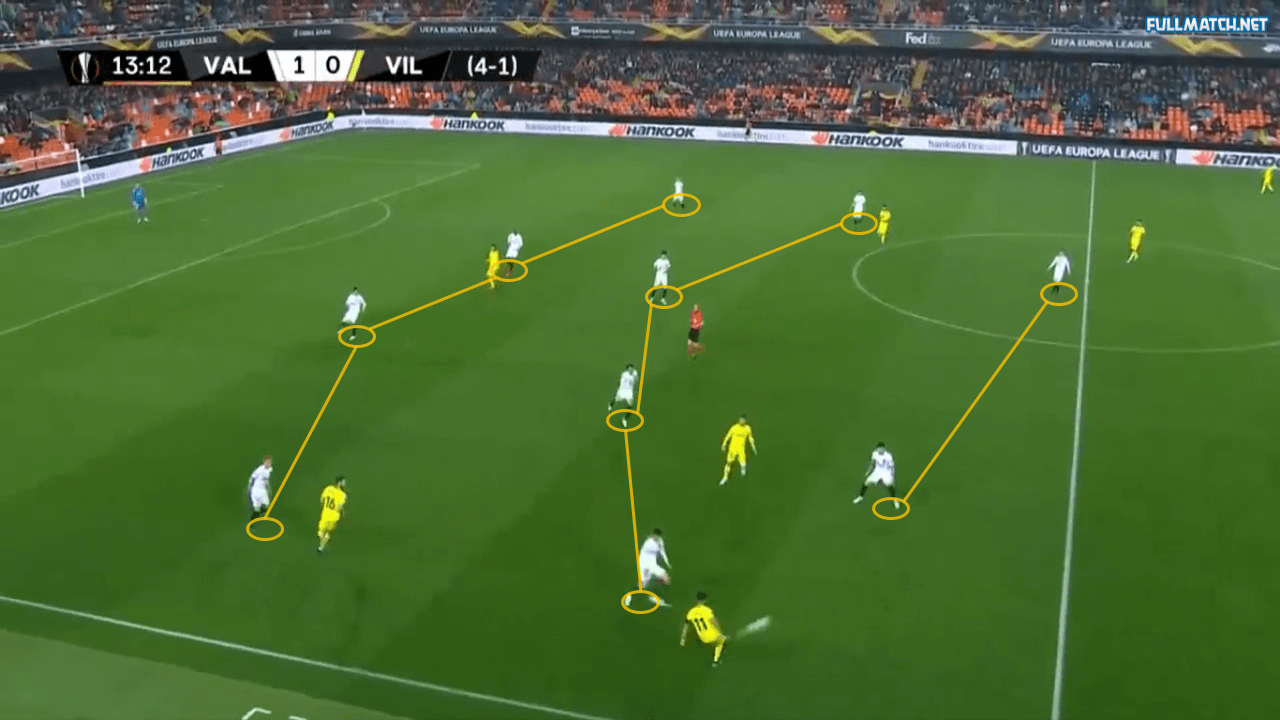
Valencia’s playing style has already managed to do this successfully throughout this season. They sit back in a disciplined 4-4-2 during defensive phases, waiting for the right moment to press and win possession. Once successful, they quickly look to organise a counter with their front two while the midfielders follow up from behind. The entire shape moves up closely and tries to pin the opponents in the final third.
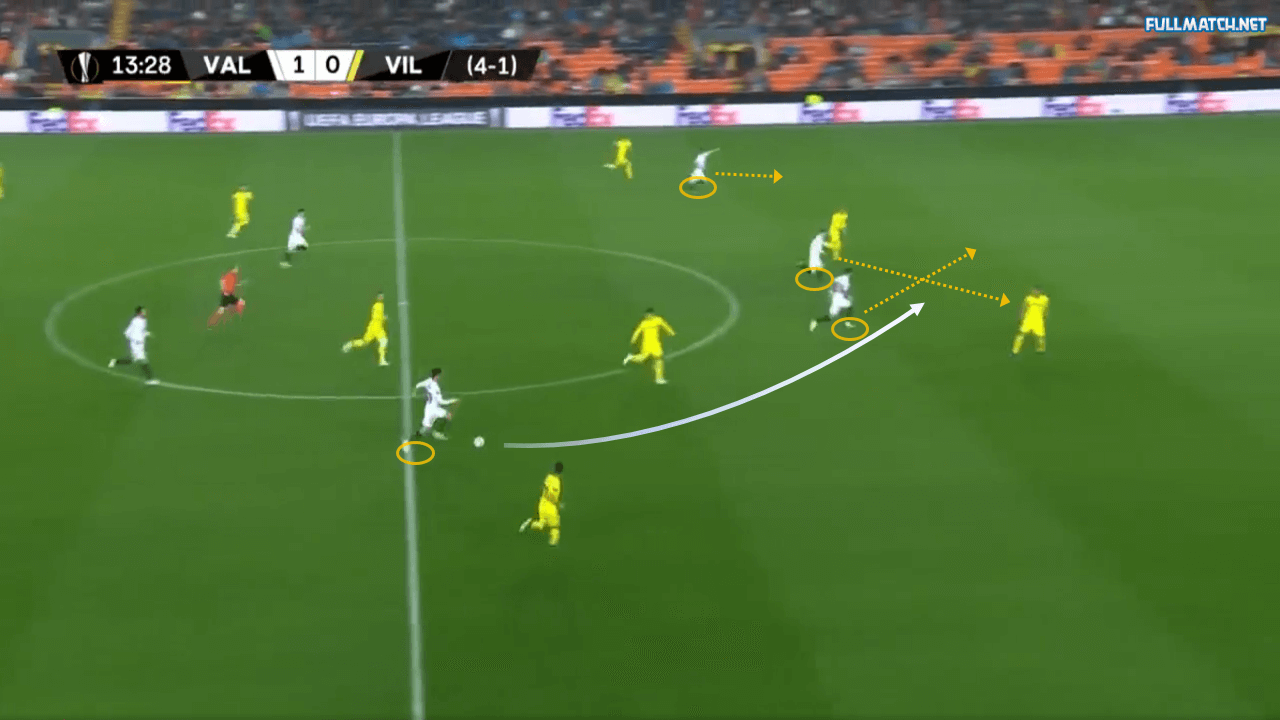
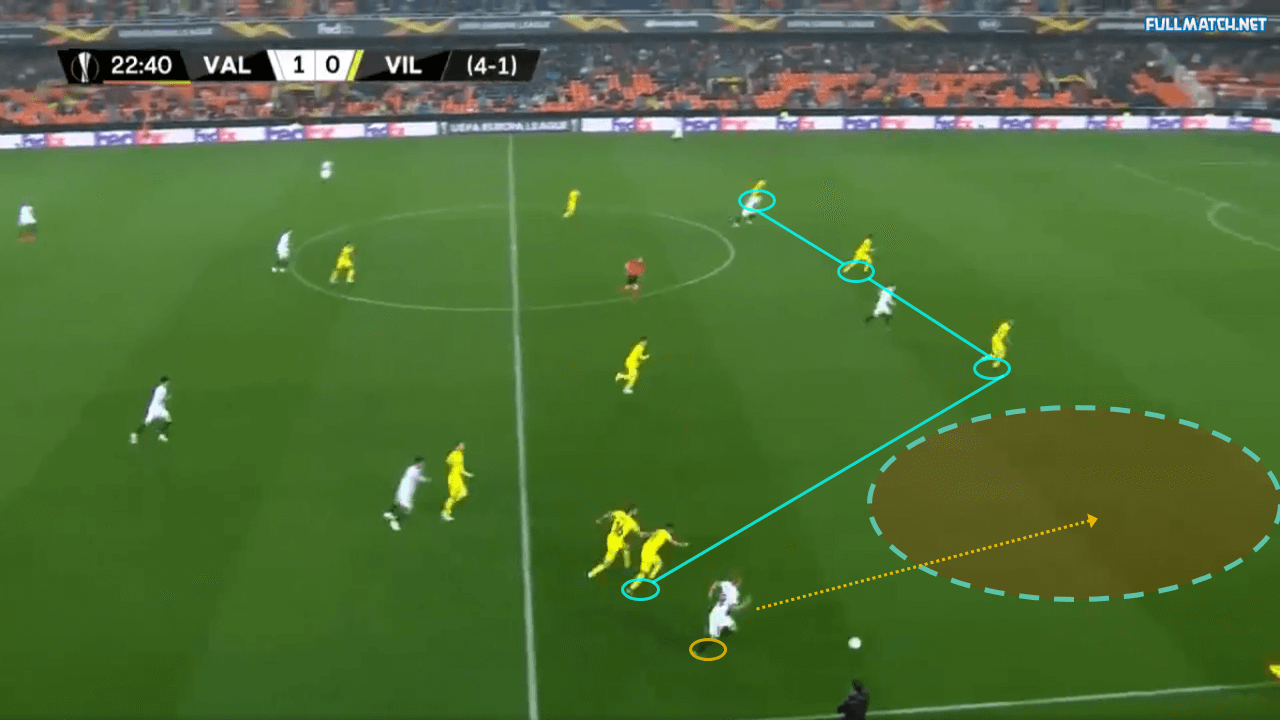
Using width of the outside midfielders and dynamic rotations involving the full-backs, they then look to maintain a constant attacking phase. Thus, with the help of the quality of players that they field, they look to quickly switch from defence to attack and minimise the transitions.
Role of full-backs in Valencia’s attack
The 4-4-2 that Valencia employ is pretty straightforward. Marcelino has also managed to make it tactically flexible involving long balls to his forwards, or patient build-up splitting the two central midfielders, one of whom is more attacking and the other more defensive.
While moving into the final third of the pitch, the players that add complexity to their style of play are the full-backs. They pick the right moments to overlap or underlap into the half-spaces with dangerous runs. This positional freedom allows the rest of the players to use them effectively in creating chances.
Valencia’s first goal is the perfect example. Toni Lato picked the right moment to run into the penalty box anticipating Guedes winning the challenge with Ratiu. Guedes fishes his run with a lofted assist that Lato converts first time to give Valencia the lead that almost wins them the overall tie.
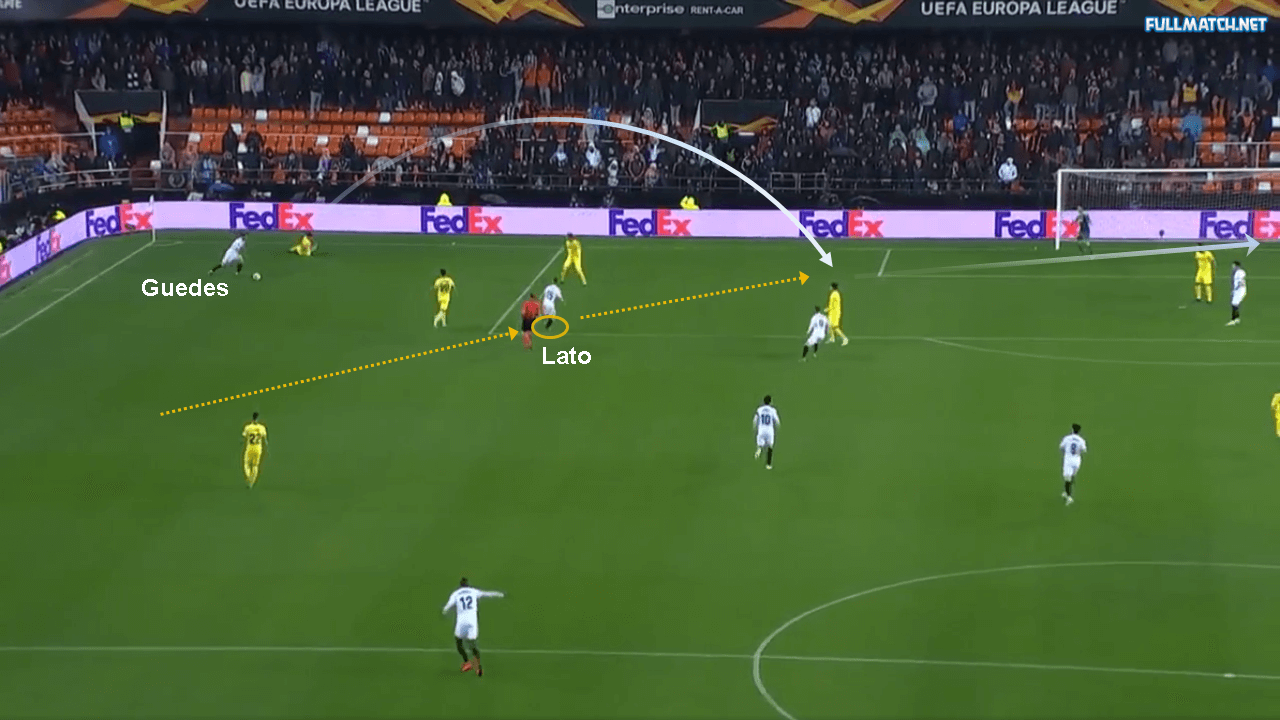
Villarreal’s positional game
Villarreal’s approach was the polar opposite of Valencia’s. Their game was more positional, involving plenty of build-up from the back, penetration between the lines and exploitation of width while moving up the pitch.
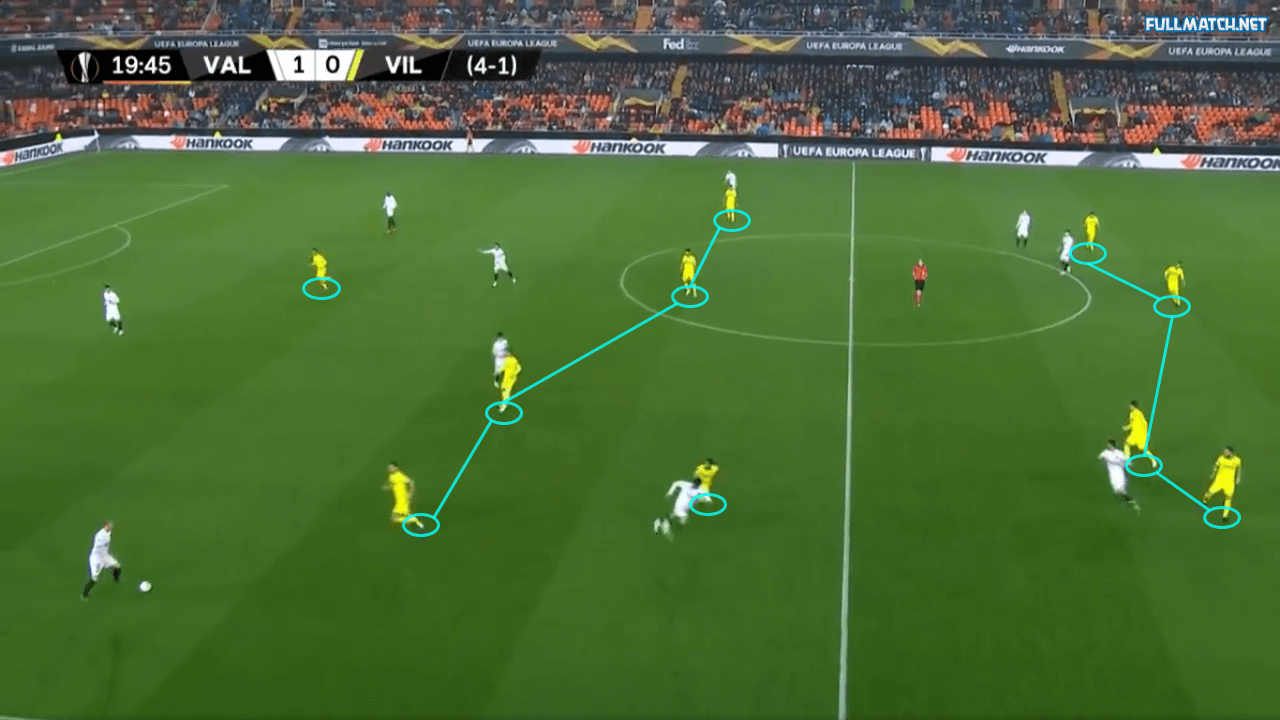
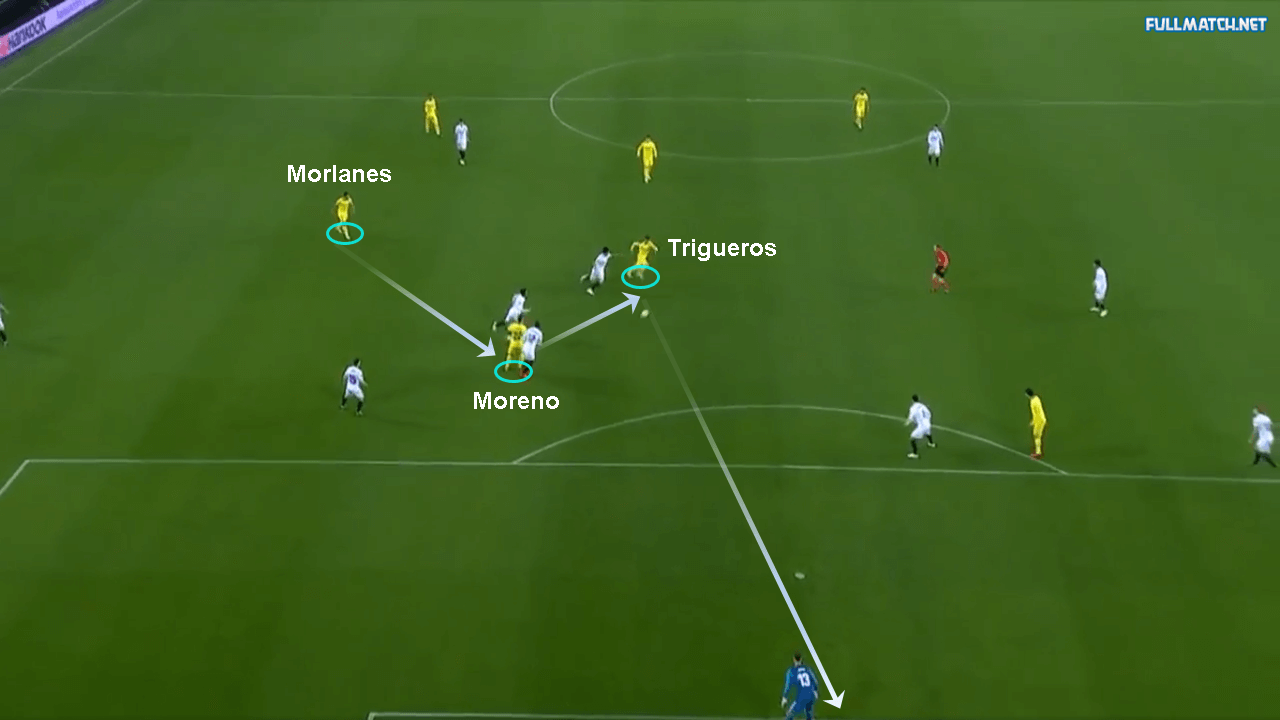
The midfield trio of Santiago Cáseres, Manuel Morlanes and Manu Trigueros were pivotal in Villarreal’s attractive passing game. Cáseres would often drop deep between the centre-backs, making a back three and giving them immediate superiority against the two Valencia strikers.
Trigueros and Morlanes would position between the lines to link play and create opportunities upfront. Alfonso Pedraza, Raba and Captain Jaume Costa would use rotations and width to stretch play and recycle possession.
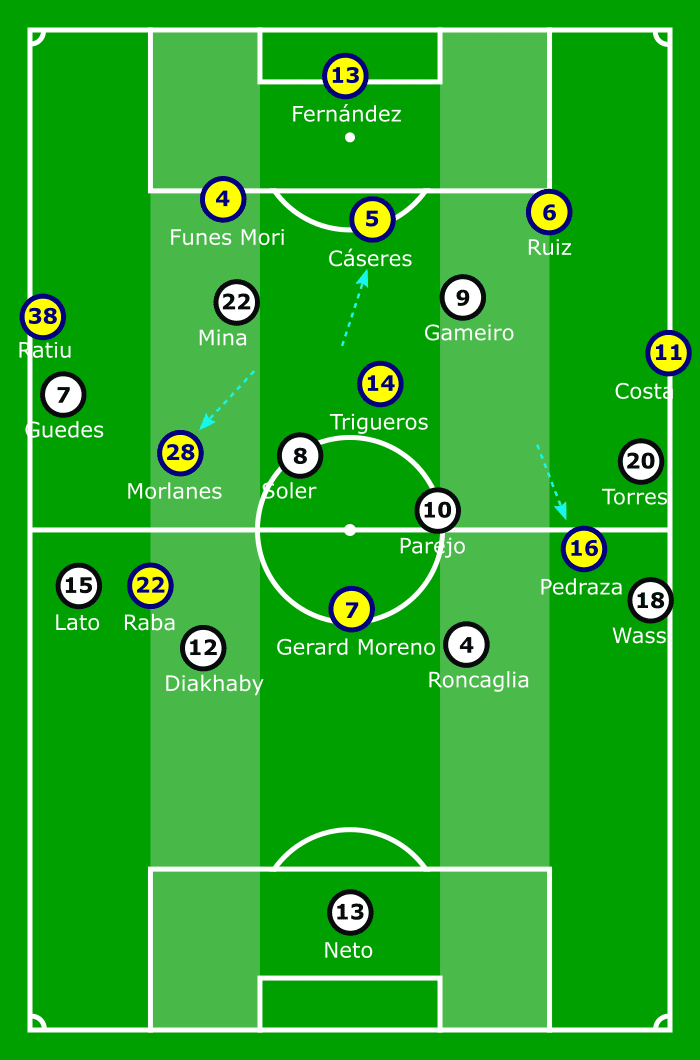
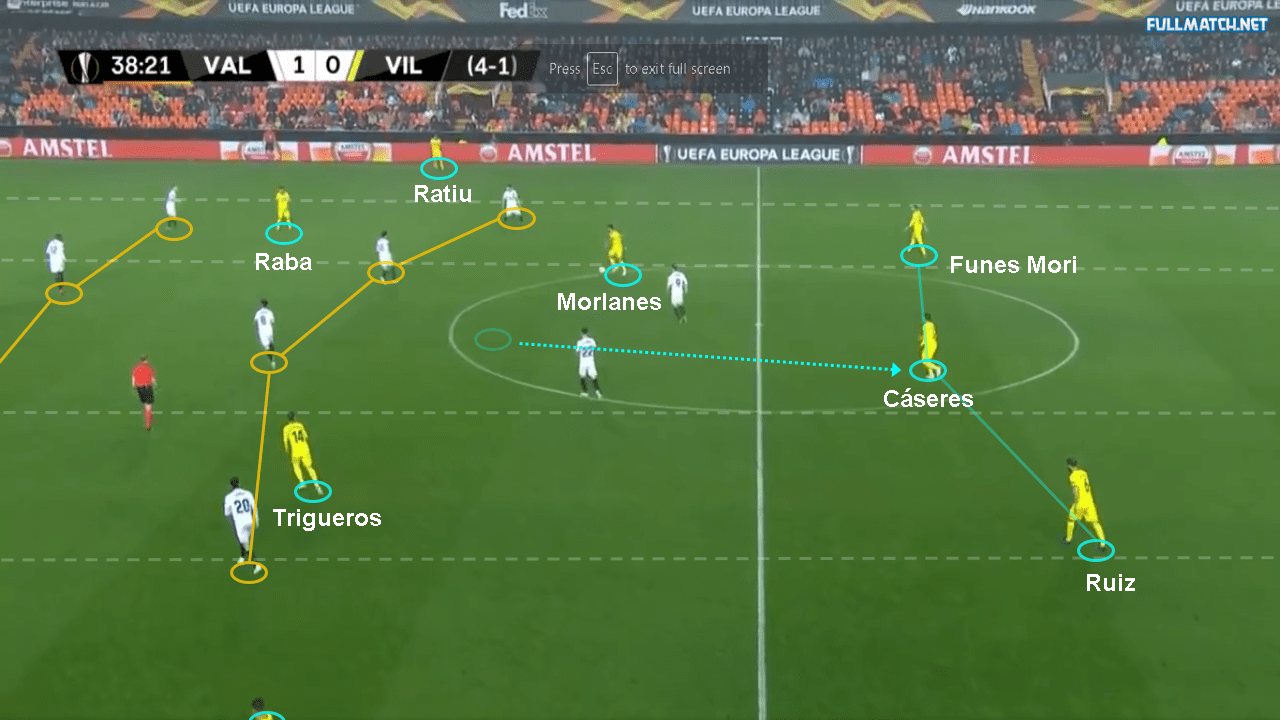
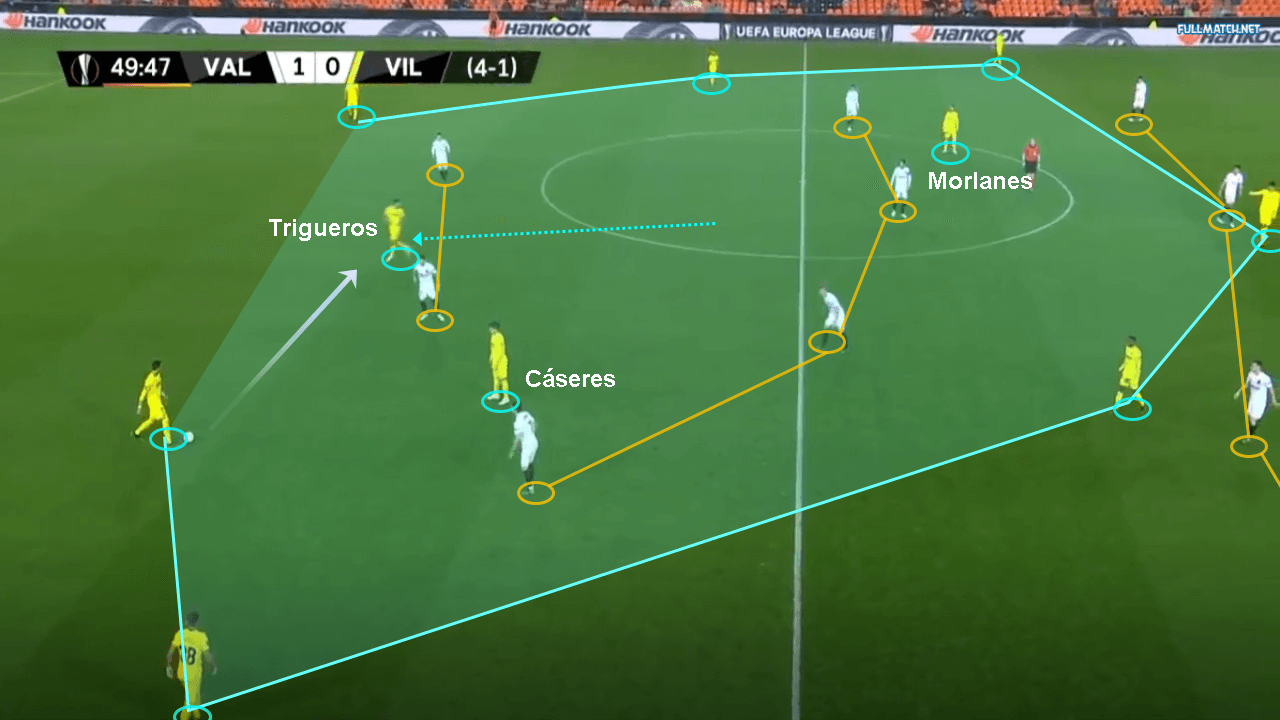
The stadium stood silent for most of the match. The occasional thunder and rain, and the ball passing incessantly between yellow jerseys were the only sounds that echoed around the Mestalla. However their attractive passing game failed to deliver results as they lacked the quality to finish the plays that they created.
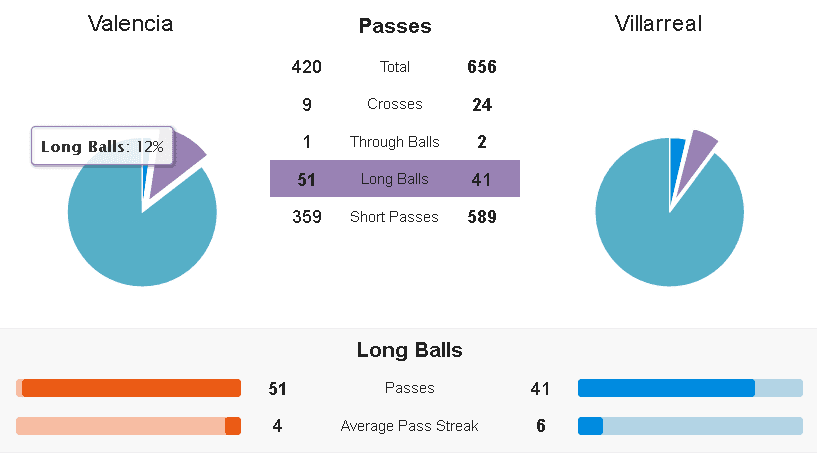
How Valencia dealt with Villarreal’s positional tactics
The Yellow Submarine lacked the quality up top to finish chances, and always fell victim to that extra touch or moment of indecisiveness. Without Chukwueze, Ekambi or Carlos Bacca, Villarreal looked crippled against the robust Valencia defence.
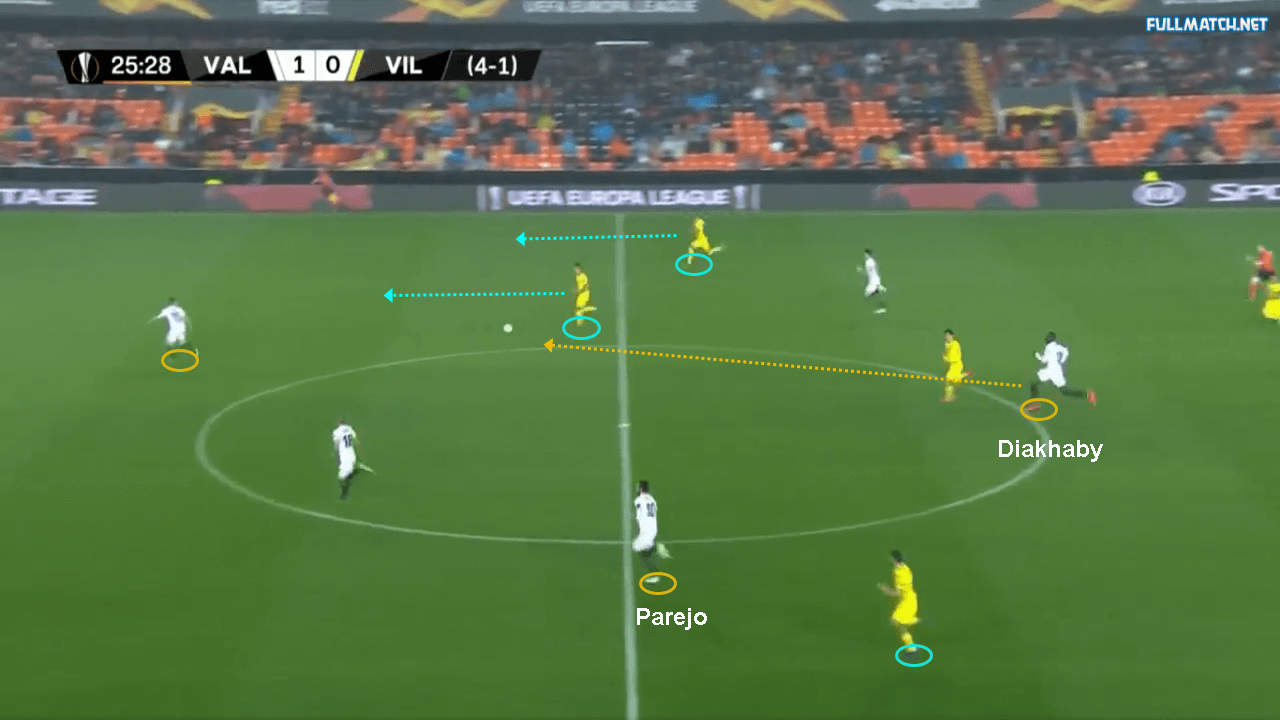
Valencia looked determine to secure the centre of their penalty box and in front of it. Diakhaby had a phenomenal game at the heart of their defence, winning his duels and giving Villarreal no real opportunities in front of goal.
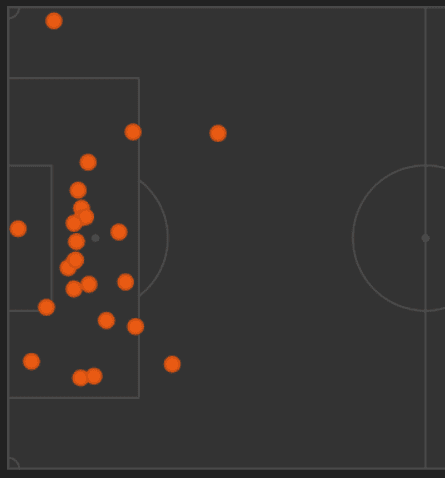
After the first goal, Valencia maintained a qualitative superiority in the centre of the pitch and were happy to sit back in a tight block and watch Villarreal knock the ball around their shape. The second goal was gifted to them from a Dani Parejo free kick that took a big deflection into Villarreal’s goal.
Half-time modifications
Chukwueze’s absence was very ostensible, and he was brought on at half time for Villarreal. Valencia substituted another central defender, Gabriel Paulista, for Carlos Soler moving the right-back Daniel Wass into midfield.
Chukwueze’s technical nous began to make an instant impact for Villarreal as he exploited the half-space attacking forward and creating chances for his fellow teammates. Villarreal looked far more threatening than in the previous half.
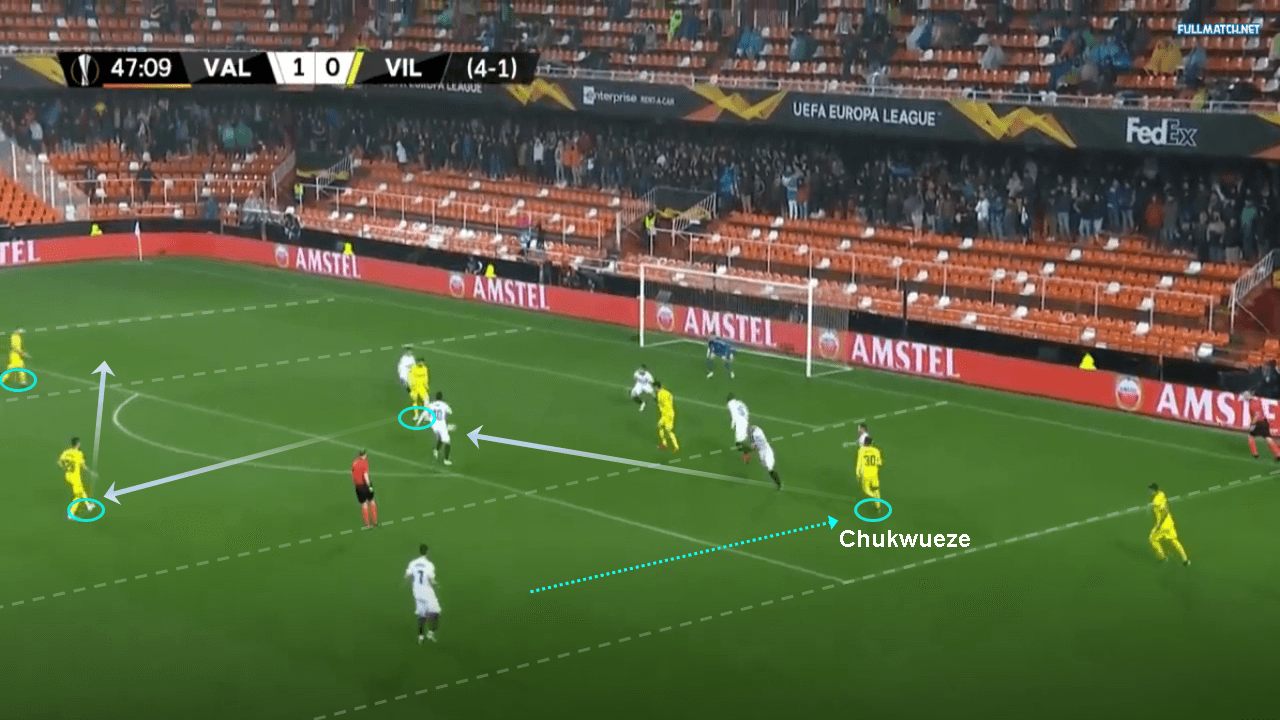
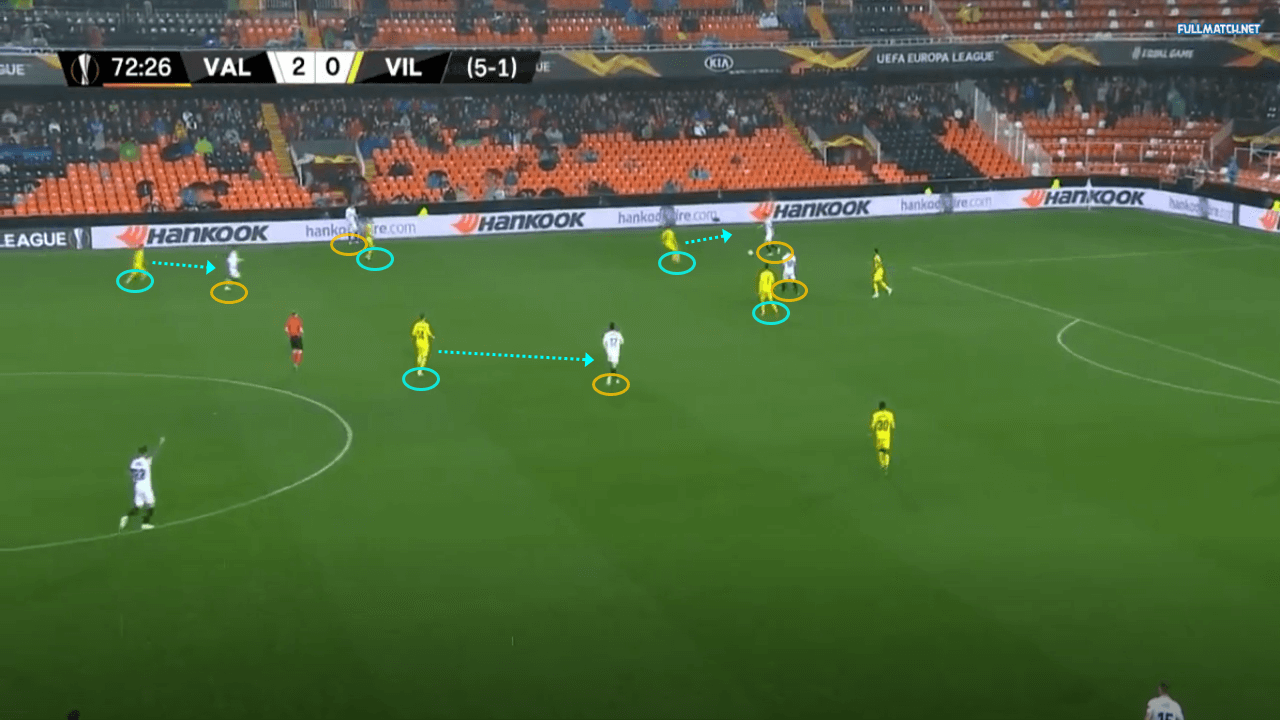
Villarreal’s second half was much stronger as they replied back with character, winning the second balls and pinning Valencia in their own half for the most part. Although their attacks lacked the precision to salvage them a goal, their attractive football was a spectacle at the rain-drenched Mestalla.
Valencia, in attempt to keep things interesting, looked to take out the proverbial bus from its parking space. Their forwards waved their arms frantically at their deep defence to press higher.
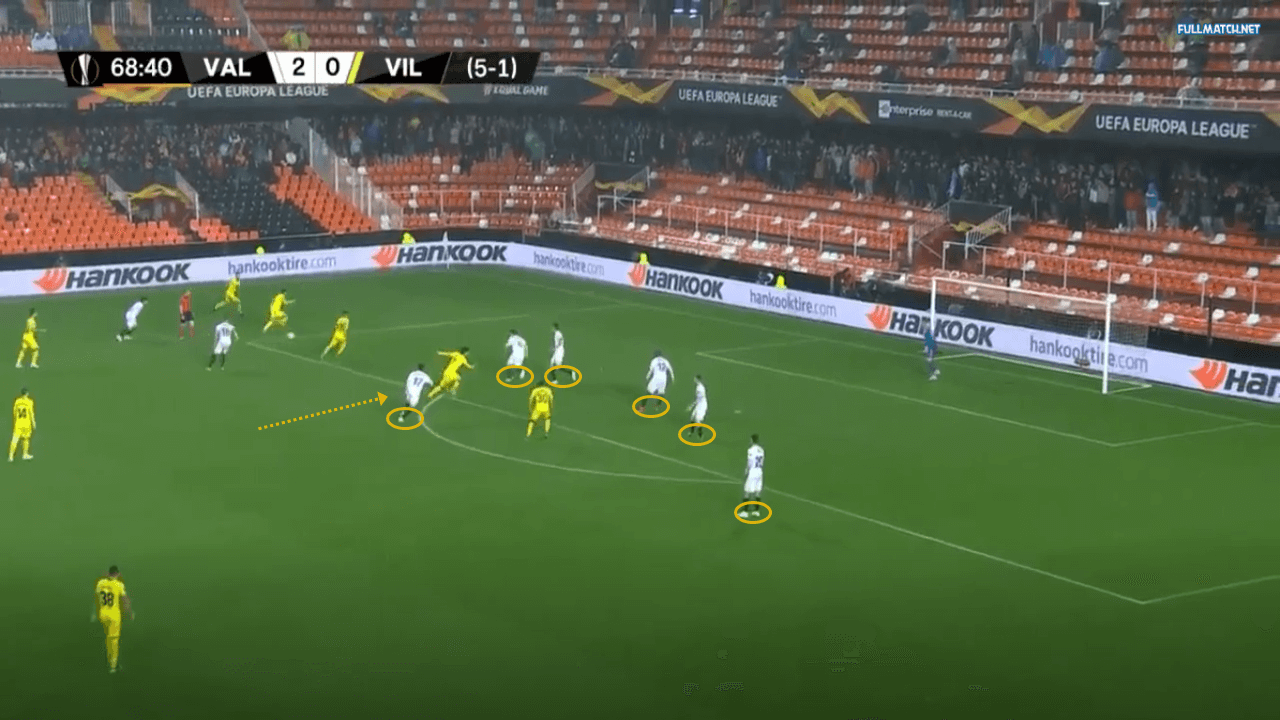
Villarreal’s wake-up call too late?
Javier Calleja’s decision to save Chukwueze’s attacking prowess for the second half and prioritise Villarreal’s relegation battle in the La Liga over the weekend was justified. But it almost looked as if the Yellow Submarine had already thrown in the towel.
Perhaps starting Chukwueze would have lent Villarreal a much stronger fight against an invincible Valencia defence. With a 5-1 aggregate scoreline, the tie was far from being rescued in the second half despite their best efforts.
Manu Morlanes’ work in central midfield for Villarreal was highly noteworthy. This was the second fixture where he enjoyed a full 90 minutes and he did a splendid job of playing between the lines and linking play. He showed great composure against a stiff opponent and the 20-year-old clearly has an illustrious career ahead of him.
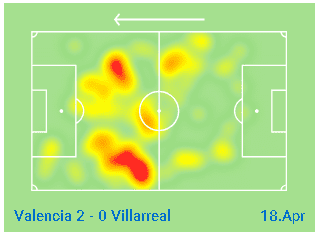
Conclusion
Although Villarreal play attractive football, they need to be more lethal in front of goal to swing results in their favour. Their Europa league campaign ends here, but with the performance they have displayed and the well-fought draw against Barcelona, there is still hope of their untapped potential under Javier Calleja.
Valencia once again proved to be clinical when needed and got the job done. They now face Arsenal in the semi-finals. Unai Emery has made a reputation for himself in the Europa League with Valencia in the past, and Marcelino’s challenge will step up a notch as Valencia face their former manager five years since the last time they progressed this far into the tournament.
If you love tactical analysis, then you’ll love the digital magazines from totalfootballanalysis.com – a guaranteed 100+ pages of pure tactical analysis covering topics from the Premier League, Serie A, La Liga, Bundesliga and many, many more. Buy your copy of the April issue for just ₤4.99 here, or even better sign up for a ₤50 annual membership (12 monthly issues plus the annual review) right here.

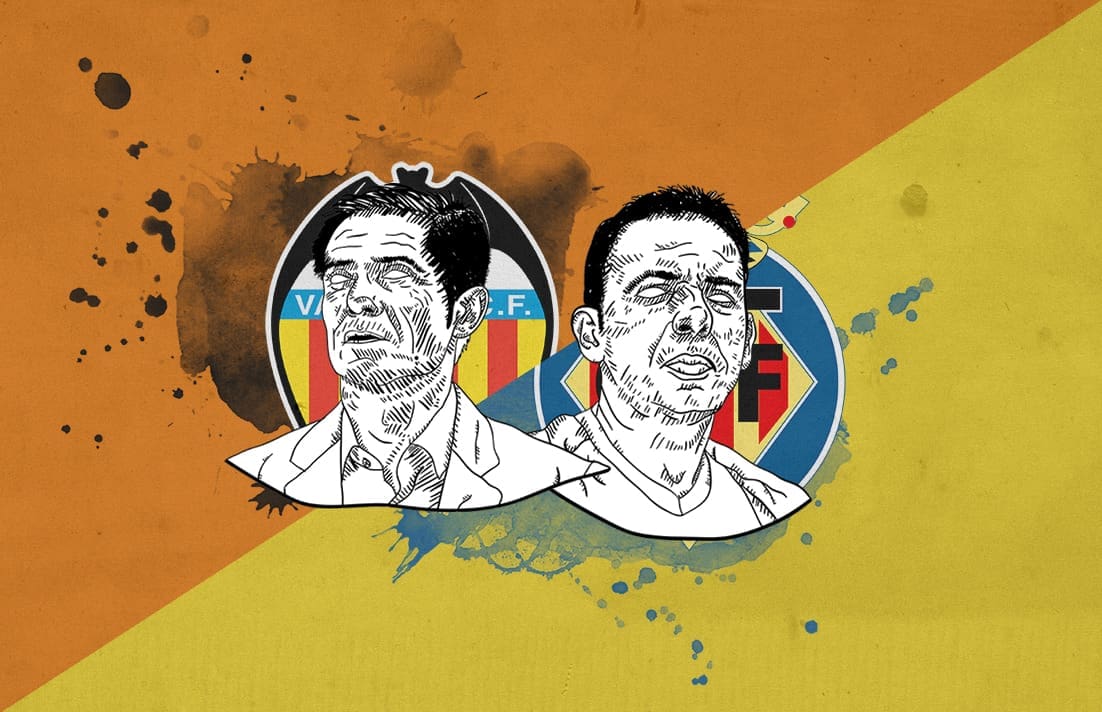



Comments